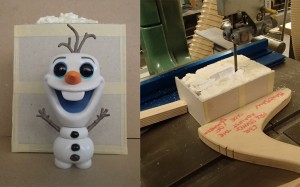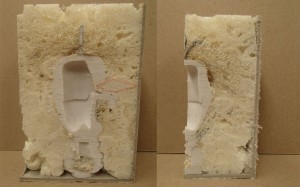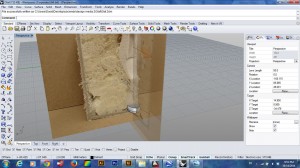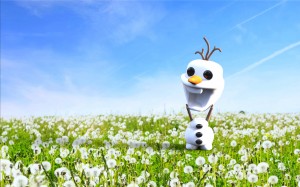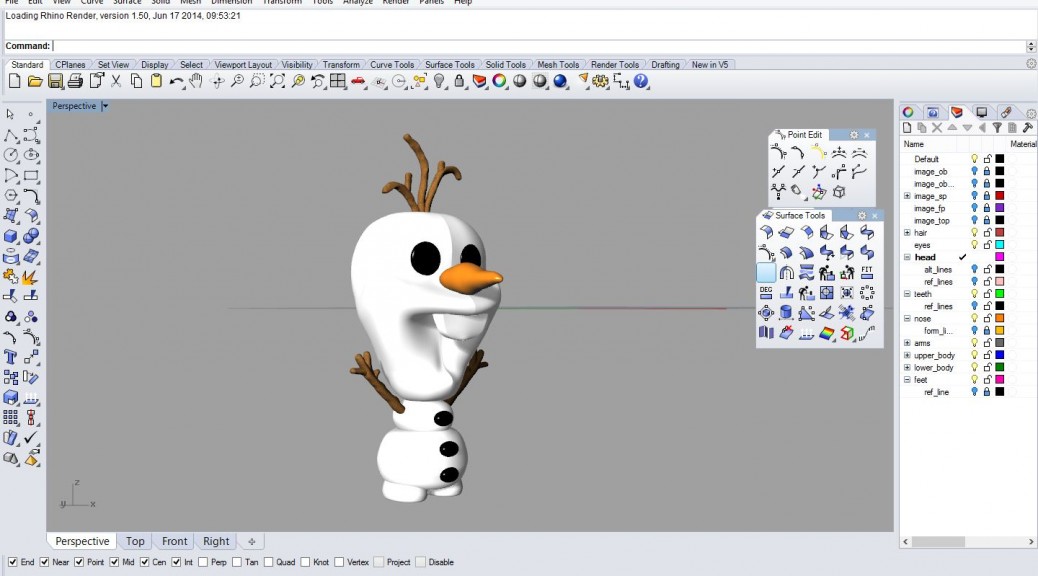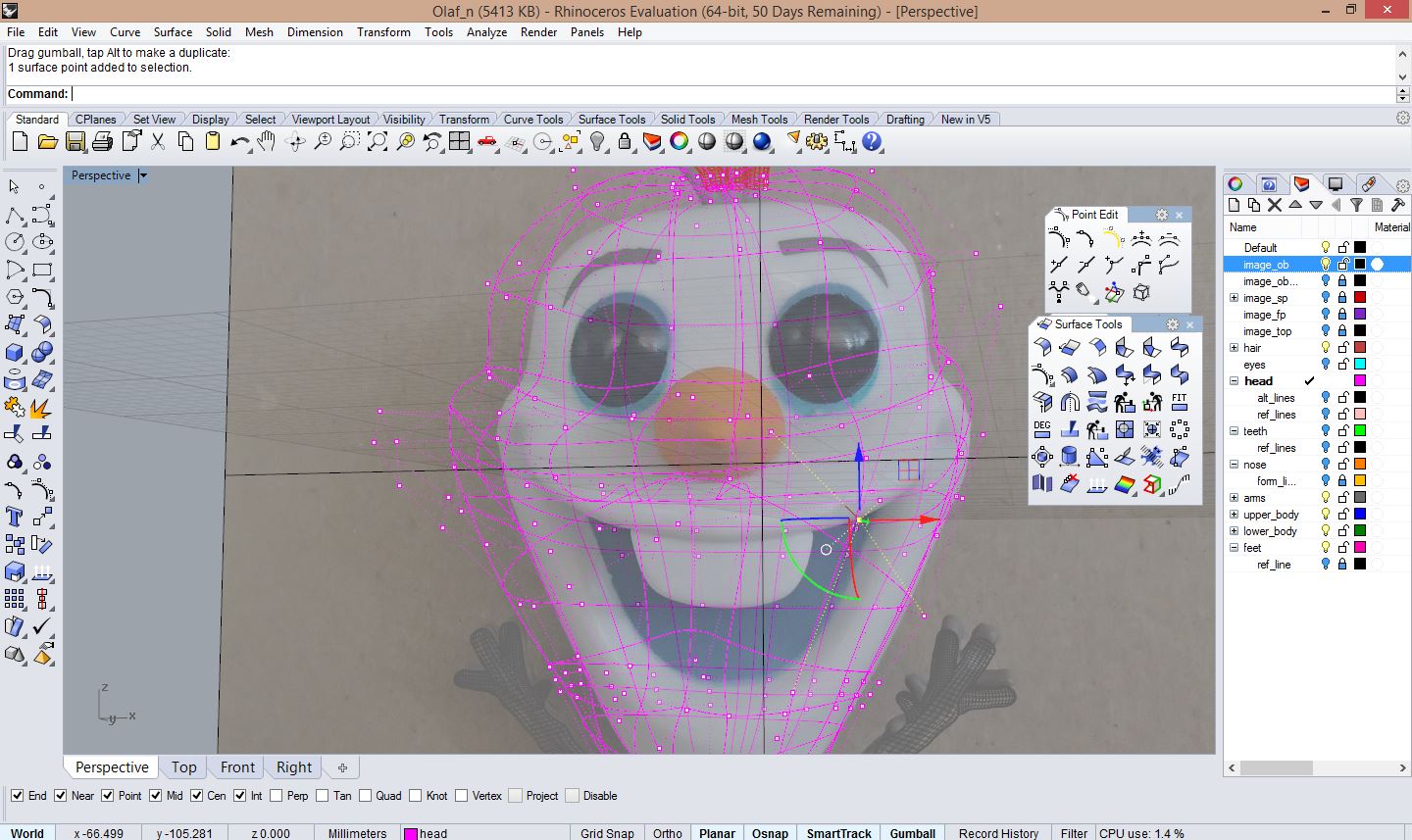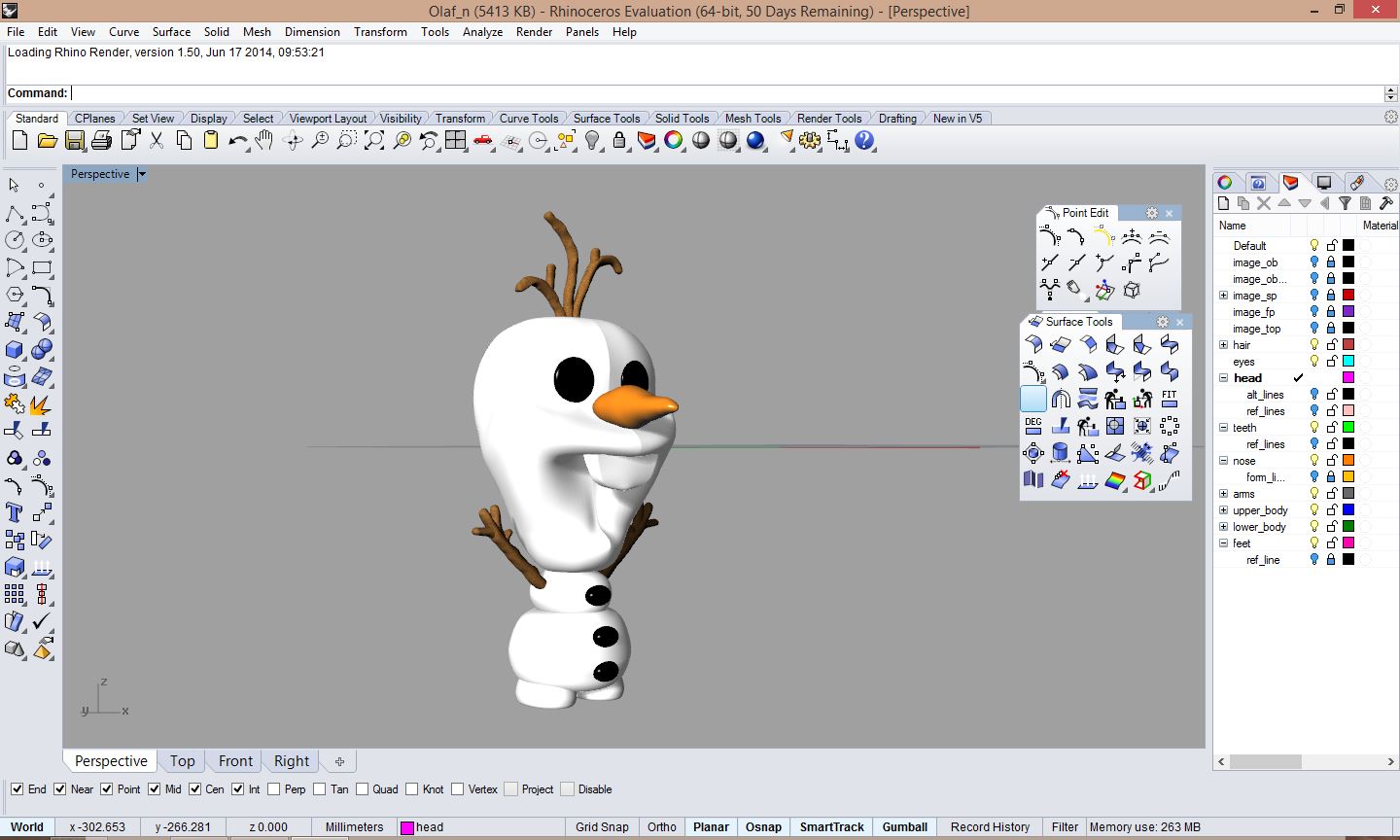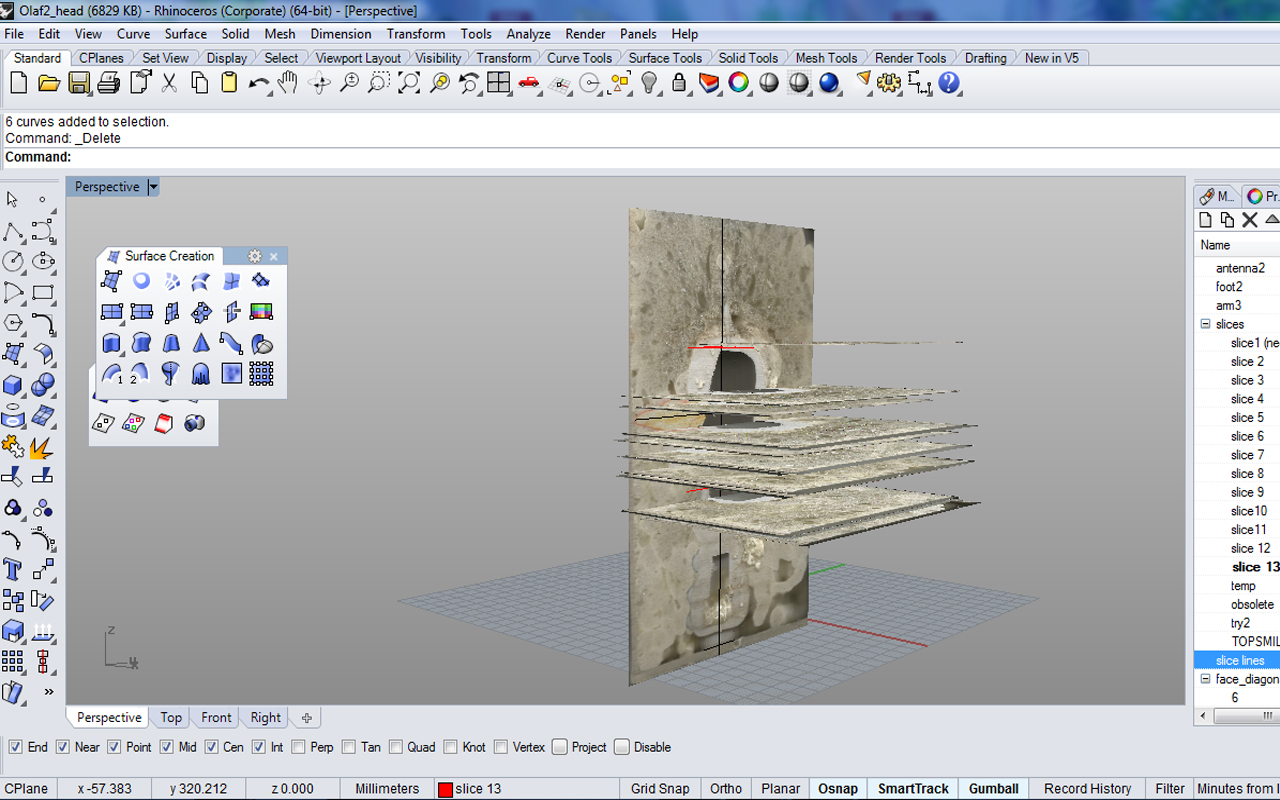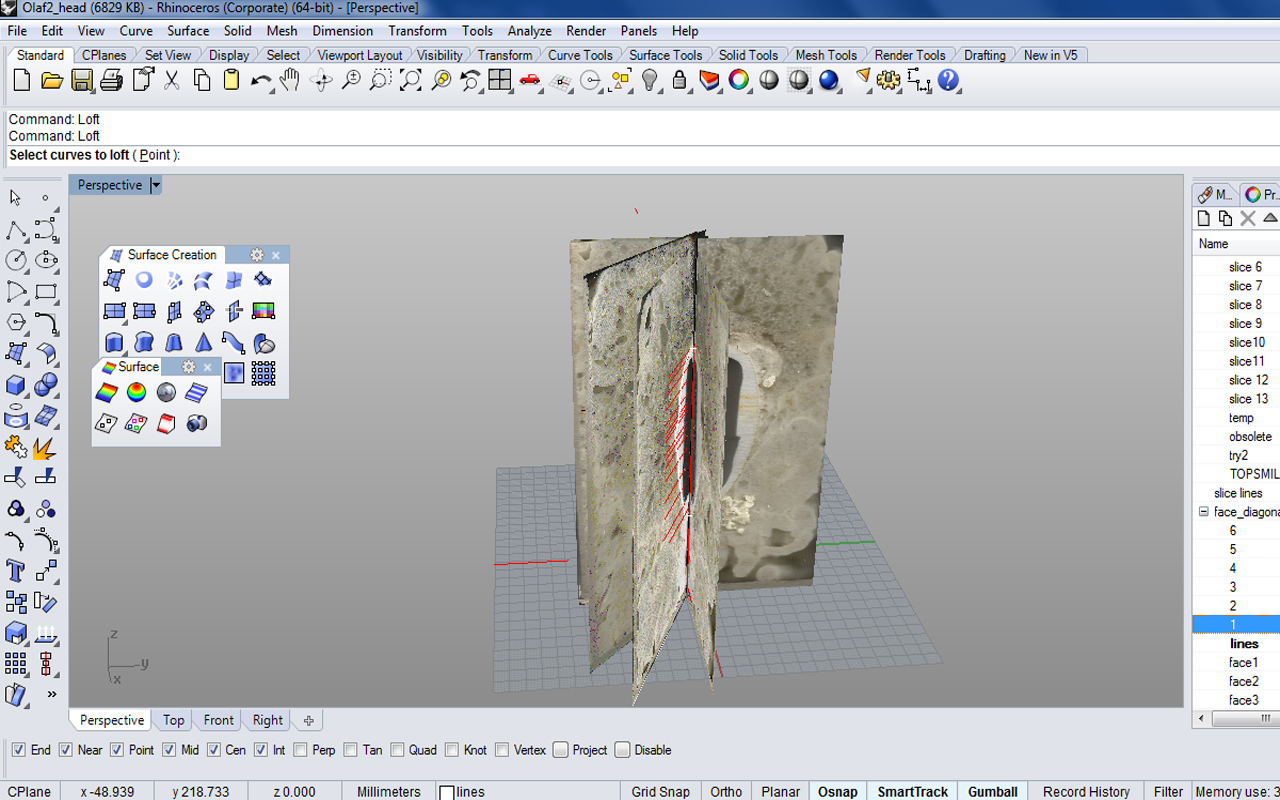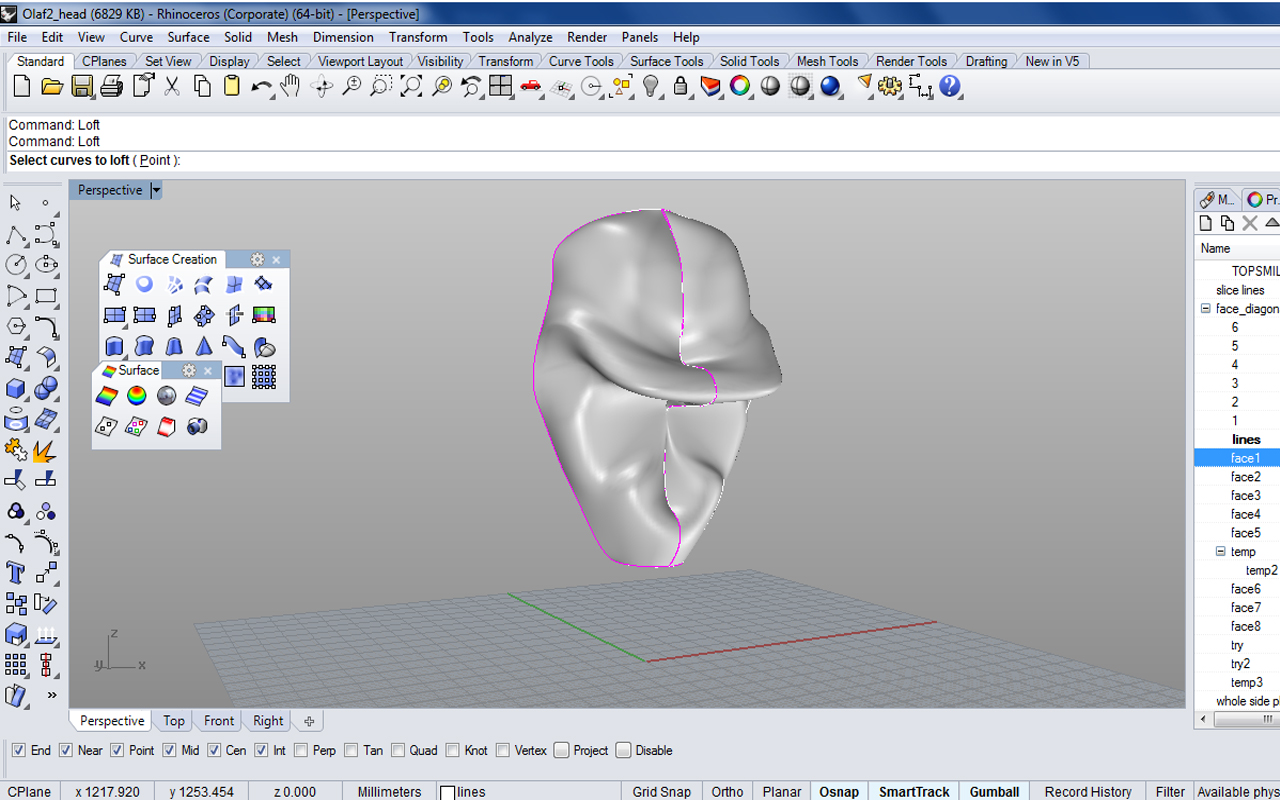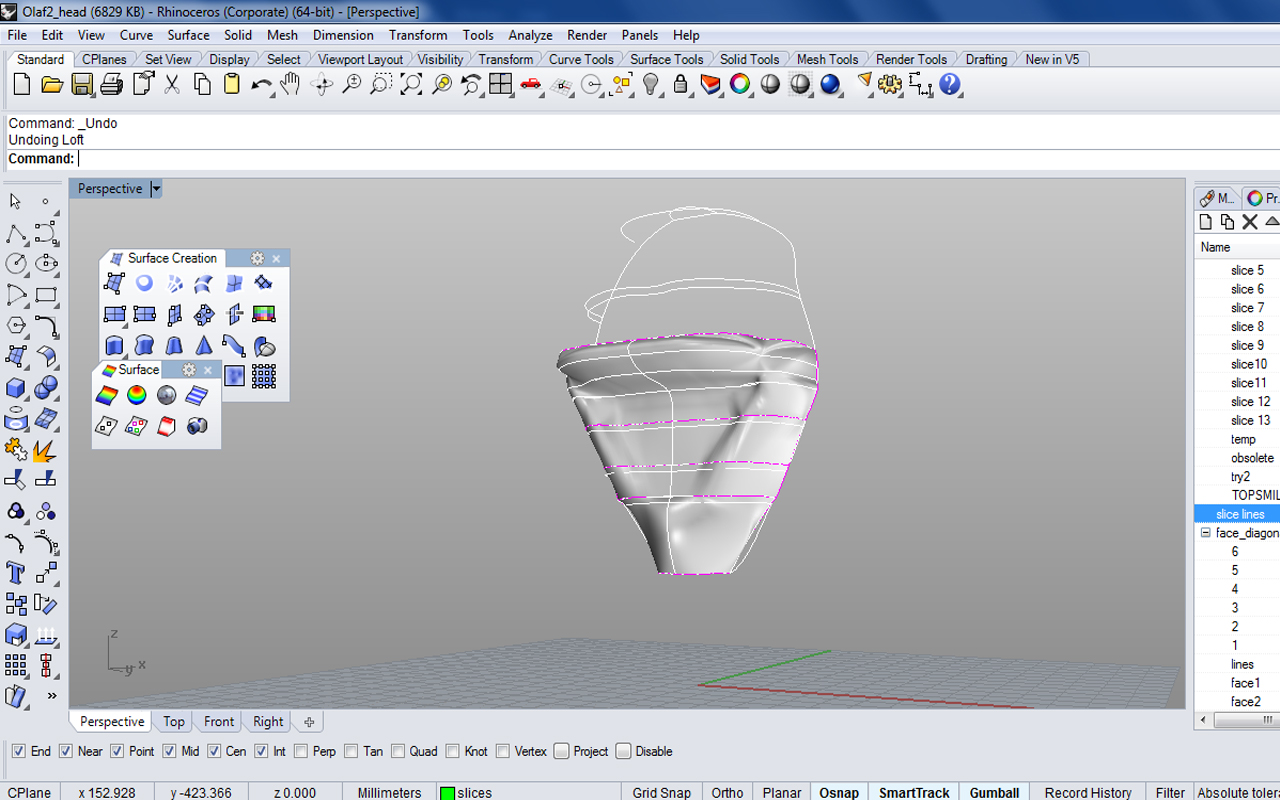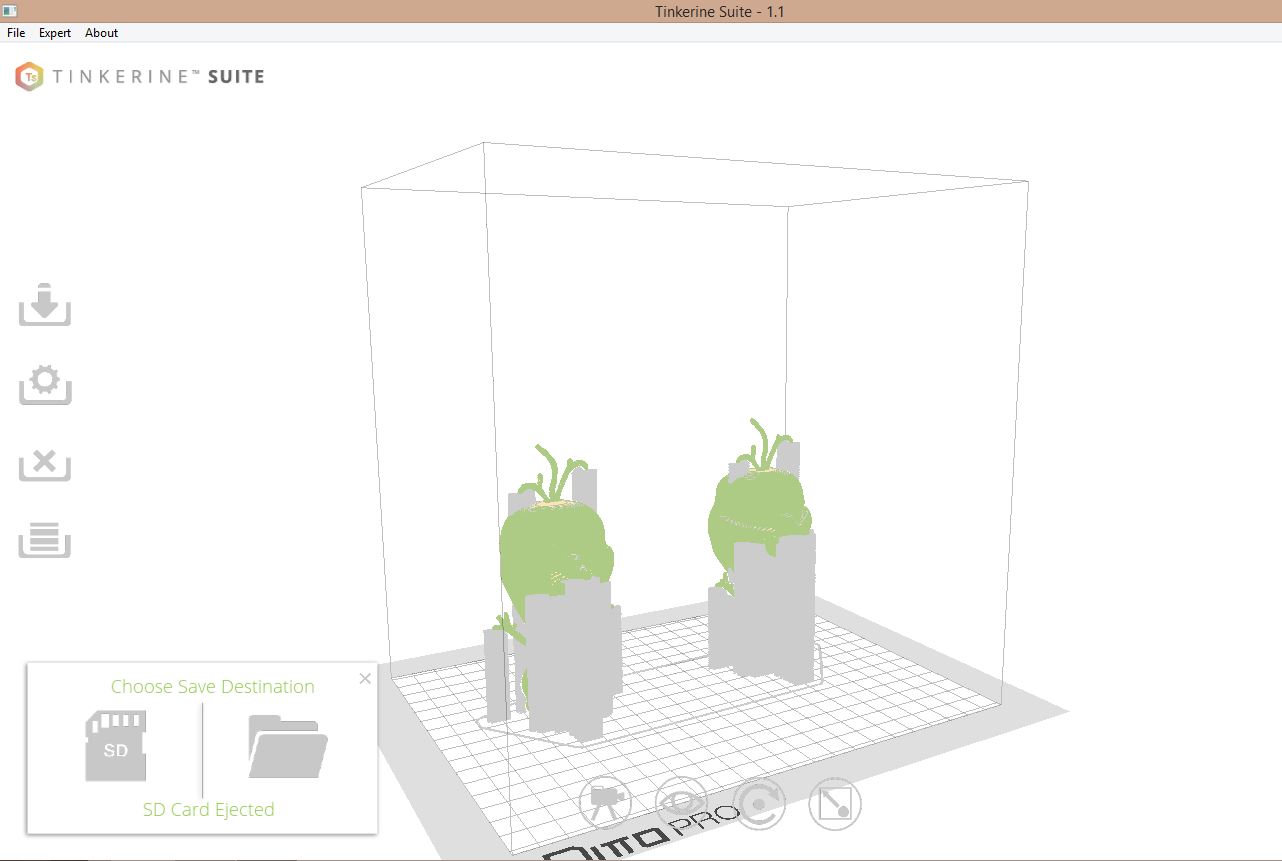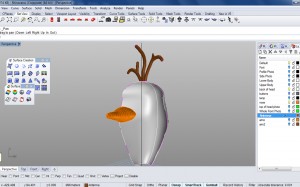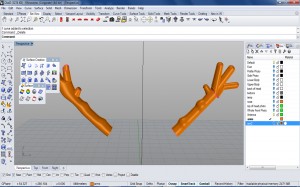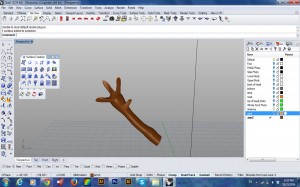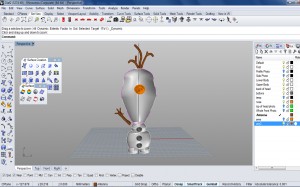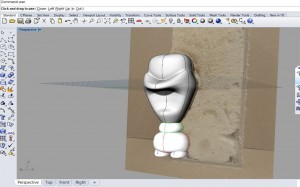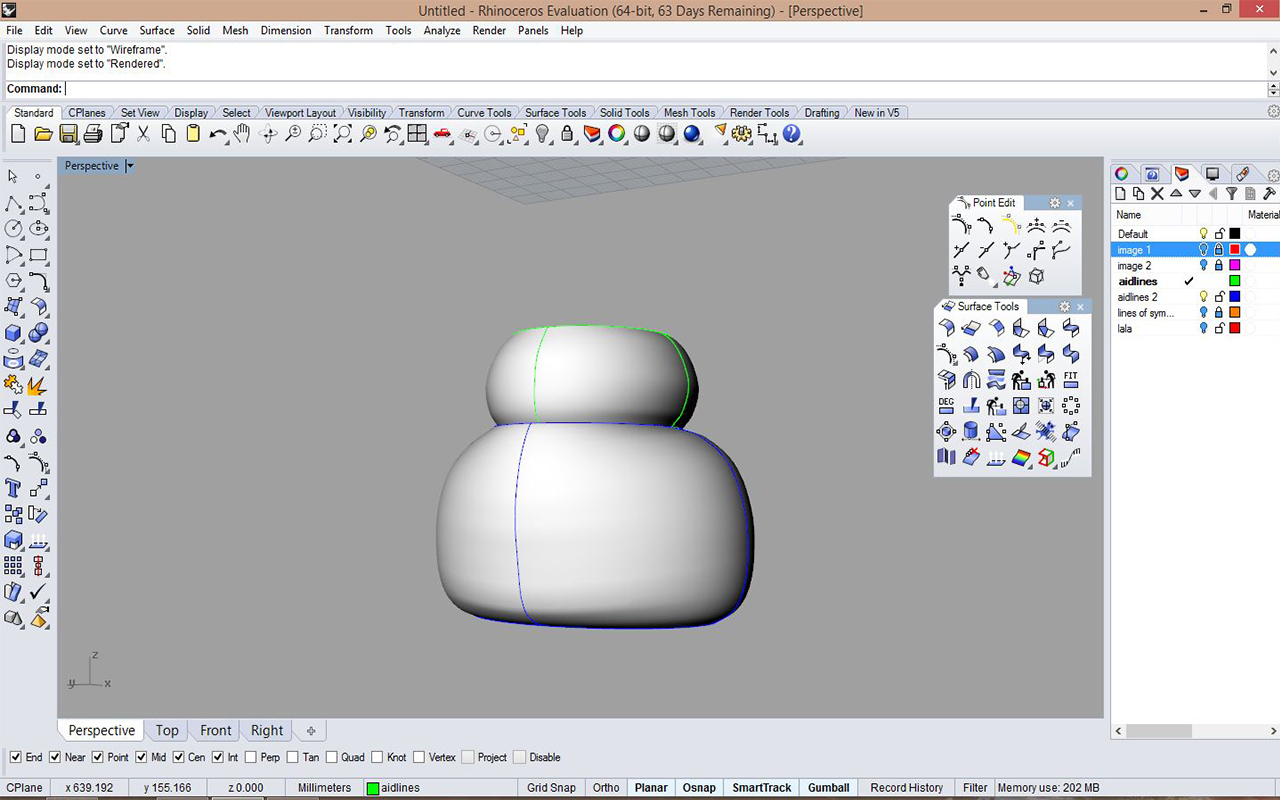Last Wednesday, we had printed our models. We tried printing in white for 3 hours but it never worked so we ended up printing in clear. Once we had the toys, we noticed a few things that were off so we went back onto Rhino and tweaked this and that to make it more accurate. Then after talking with Edward and Andy, we decided to do something fun with the model for our renders and to hopefully print a second time in white. We decided to play with Olaf losing his head, both in different ways, because that is something he does in the movie. We used those for our renders, but unfortunately we never got a chance to print them because our studios printers both broke and using the white PLA was never fully resolved by anyone. It worked for some and not for others and we thought we shouldn’t waste printing time that others might need when it might not even come out. Hopefully once our printers are back and working we will be able to print these ones.
Tag Archives: olaf
Modelling Olaf 3
This week Darcy and I worked on modelling the face which required a variety of attempts and methods to accomplish. Using a curve network and then editing control points to shape the smile and correct the volume was one method. In order to get both sides of the face to be symmetrical, One half of the face was modified and then mirrored.
The other method was using horizontal slices at different heights and then lofting them together to produce the face volume. This made the bottom part of the face look good, but distorted the top half. Then we tried using vertical slices cut along diagonals of the face and creating a curve network from those. This produced a good top half of the face but distorted the bottom half. Next we tried putting those two together but couldn’t get them to connect properly.
Once the face was completed, we created the eyes using distorted spheres, and the teeth with a curve network. After that we boolean union all the parts together to get ready for printing. We ran into some difficulties when trying to mesh the object which required repairing some shapes to eliminate naked edges and make it a closed solid and Andy helped us with manifold edges and how to fix them. Now we are ready for printing.
Olaf Part 2
Darcy Keester + Luis Puente
This past week we have tried to model all of the components of Olaf. We first worked on the body last week before realizing our photographs were not very accurate, so we scanned our pieces instead and re-modeled the body. Next we worked on some of the smaller details like the hairs, nose, and buttons (screenshots 1 and 4). Those were done using the sweep and loft commands. We also worked on the arms, which have turned out to be very tricky. Our first attempt used sweep to make the arm and then another sweep to make each finger, which as you can see from the screenshot (#2) below turned out looking not so great. In our next attempt we used only one sweep to get the arm then played with the control points to make each finger (screenshot 3). The trickiest part now is modelling his face. We made a first attempt, as seen below (screenshot 5), using a curve network with curves on the front, two sides, and two in between on his face. However, we decided we need more cuts to our model to more accurately make this part. So we are going to try two different methods of cutting it, since we already have scans of our cuts we figure we can do that to see which one works better. One method will be similar to the idea of getting those curves down his face, like our first attempt, and the other will be to make horizontal cuts along his head. Besides that our next step is to figure out how to put each piece together and how to make it “solid” so it can be printed.
olaf modelling 1
This week my teammate and I sectioned our vinyl toy trying to be selective about where we cut to get the information we needed. We proceeded by documenting the pieces so that they could be placed in rhino for modelling.
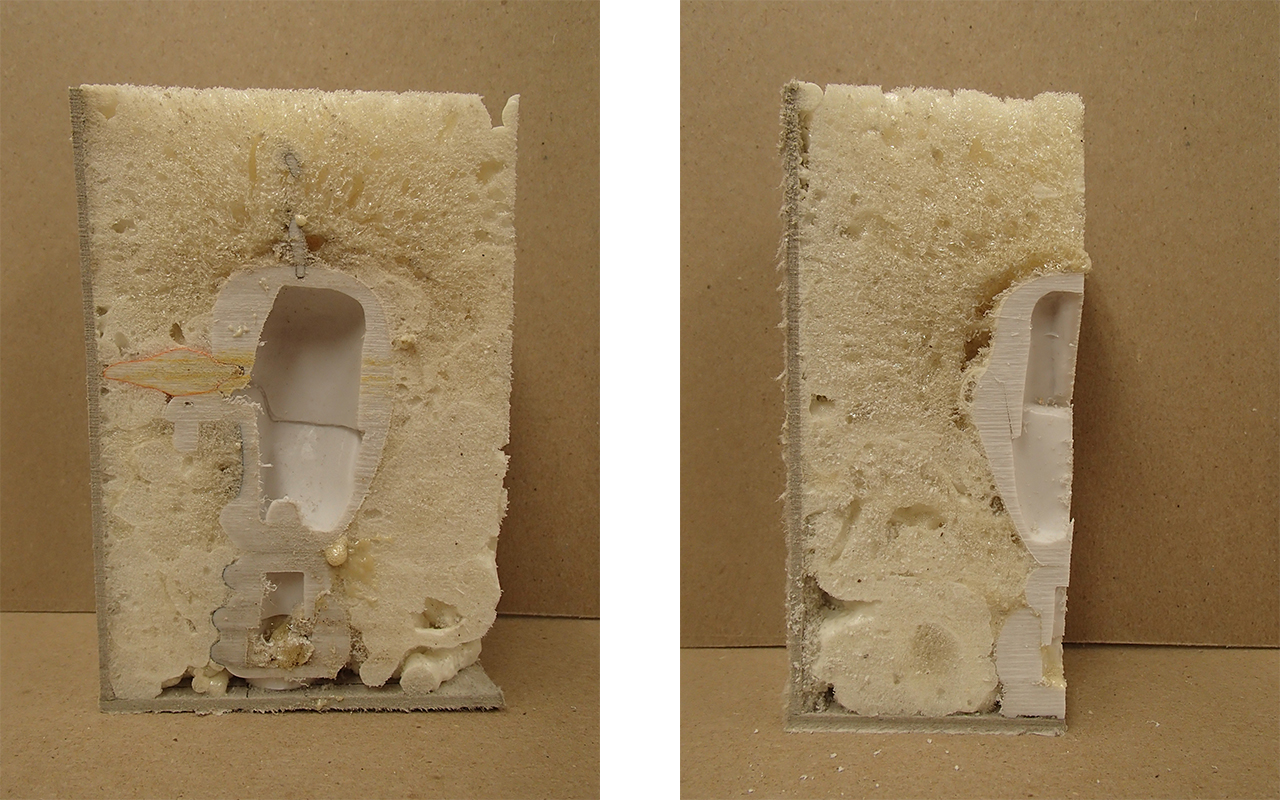
To produce part of his body, I traced the outlines from the pictures to get the vertical shape and mirrored them to have four of the sides. I connected the top and bottom using ellipses and ran a curve network command to model the lower torso. I repeated these steps to produce the upper part of the torso and then joined both volumes.
Beginning To Model Olaf
This previous week my partner and I went about building a box, spraying the foam and letting it harden, then bringing it to the woodshop to cut. After cutting it, we found that some of our foam had gotten inside the actual toy and thus hadn’t hardened and started oozing out, so that was weird. After talking with Andy, we decided to do less cuts for now to see what we can get from that information, and might do more later if we find we need more information about a piece. I then brought my images into Rhino and scaled them. So far, I have only been able to build the foot. I did this using three images, the two sections plus one of the foot straight on. I then used those as references to create a series of ellipses which I lofted and closed. The hardest part was lining up all of the images correctly when they are all oriented a different way and are all semi-transparent making it hard to see what’s what. 